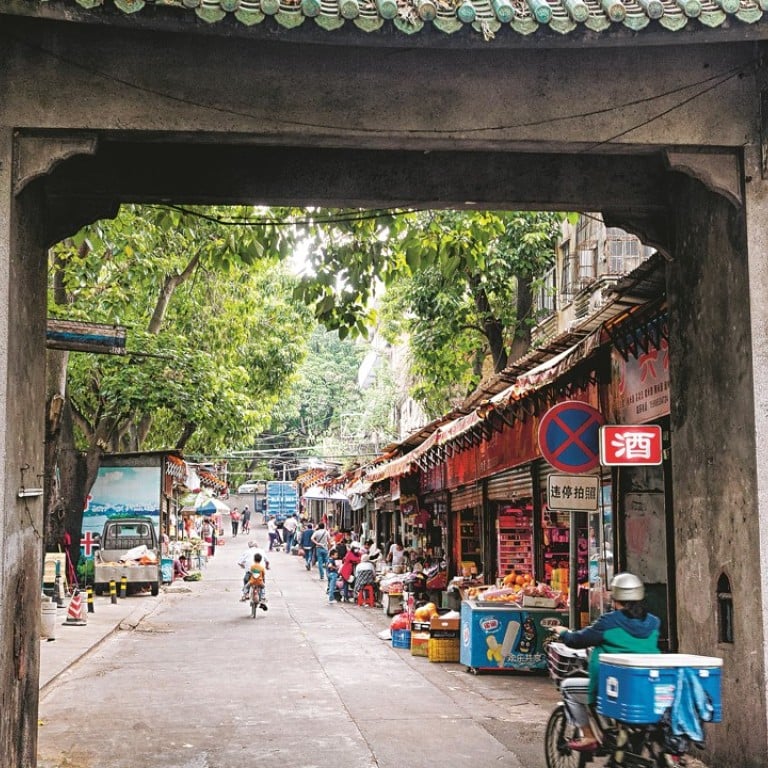
China weekend break: Huizhou Lake District’s rich history and idyllic walks make for a relaxing trip
- A convenient stop on Hong Kong’s Express Rail Link, Huizhou has a mix of urban areas, culture and scenery, with ancient pagodas and pavilions
- Its top tourist attraction is the West Lake, which is perfect for lakeside wanders
Checking the schedule for long-distance, high-speed rail routes from Hong Kong’s West Kowloon terminus, it appears one of the few convenient stops for a weekend away with my wife and son is Huizhou in central Guangdong province.
Huizhou is the name of both a city and the surrounding county in the eastern “Greater Bay Area”, with a mix of urban areas, culture and scenery. The city was once noted for its gangsters, with a 1997 San Francisco Chronicle describing it as being “widely regarded as [China’s] de facto capital of organised crime.”
This home-grown Chinese hotel brand wants to take over the world
Today Huizhou’s top tourist attraction is the West Lake, and we booked into an inexpensive boutique hotel by the northwest shore. It turns out this is in a rather sleepy neighbourhood with buildings hosting chic looking cafes and hostels, along with restaurants serving Cantonese fare.
Rows of broadleaf trees flank a lakeside path. There are no triad bosses with mirrored sunglasses here – only families and couples strolling past, and some elderly men playing cards at a couple of tables.
China has 36 “West Lakes”, but only three are really famous: in Hangzhou, Yingzhou, and here. Huizhou’s lake was enlarged around 1966, along with the addition of pavilions and bridges.
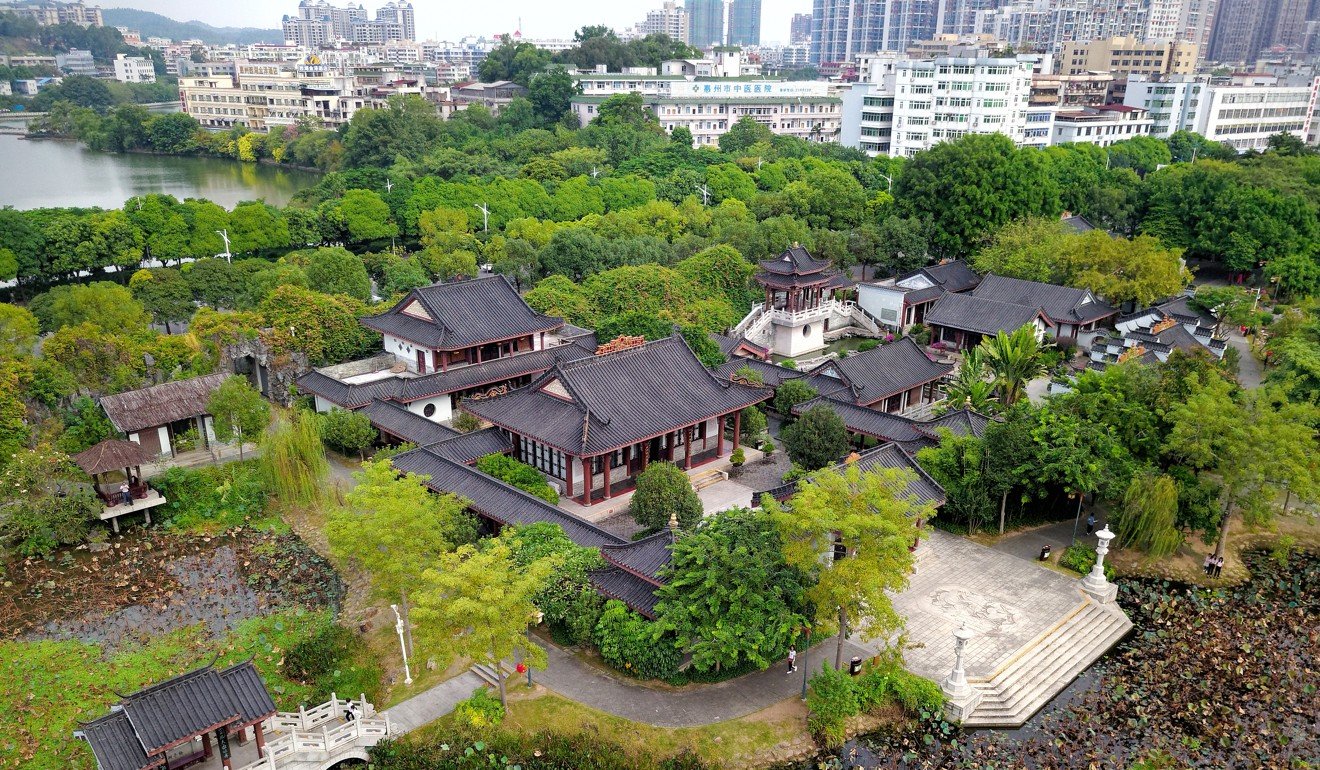
From the 1950s to 1980s, housing projects encroached on the lake. But in 2007, the local government began a major rehabilitation project, protecting the remaining West Lake and several historic buildings, and constructing a host of footpaths, bridges, pavilions and corridors in Lingnan – traditional Cantonese calligraphy – style.
Now, these paths allow for fine lakeside wanders. There is a host of straight, zigzag and arched footbridges interconnecting islets, which are like stepping stones we follow between the west and east shores of the lake.
Especially in the east, the paths skirt alongside low wooded slopes, and while downtown Huizhou is little more than a kilometre away, its high-rises are mostly hidden from view, and the landscape recalls the days of long vanished imperial China.
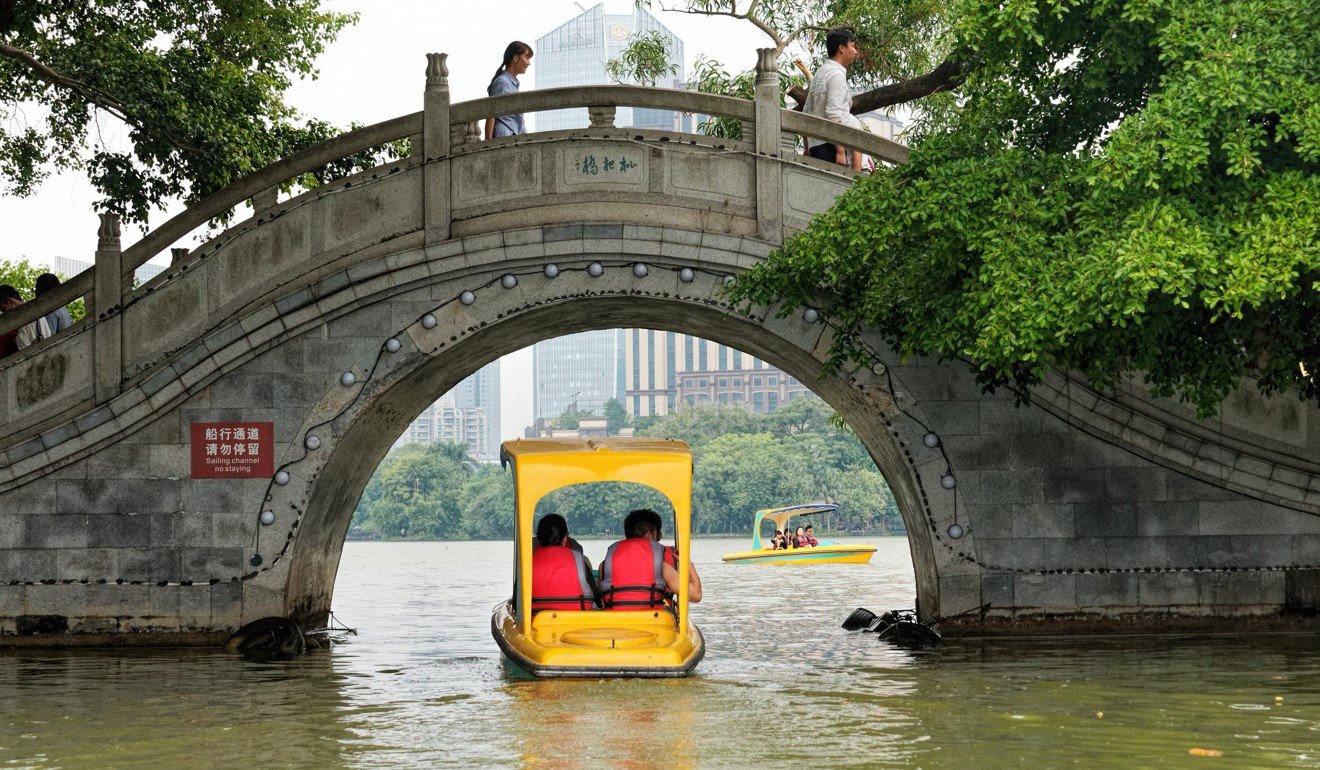
Information boards are dotted around, and make frequent mention of poet, statesman and gastronome Su Shi (or Su Dongpo), who was exiled here in the late 11th century after his writings caused upset in the court of Song dynasty Emperor Shenzong. Statues featuring Su reflect the scribe’s penchant for lychees and fair maidens.
In places, we come across older buildings, like the imposing, two-storey Sunglow Shed, which has intense red walls topped by a sweeping, green-tiled roof.
While dating from 1935, this is on the site of the original Sunglow Shed, which was built in 1530 and named after a poem that mentions “Scenery on all four sides covered in sunshine.”
Use delta bridge, Hong Kong express rail link to see China heritage
The oldest structure here – and in all Huizhou city – is the forty-metre tall, seven-storey Sizhou Pagoda, which was built in 1618 atop an island. This is also the lake’s most prominent man-made landmark, and is especially eye-catching when illuminated at night.
Immediately north of West Lake, the main city area of Huizhou is set within a sharp bend in the East River, which is over 500 metres wide here. With its jumble of office blocks, it does not look too appealing, but we explore the city fringes along the near bank of the river.
Here there are remnants of old Huizhou – like a row of almost shanty style market stalls packed with fruit, vegetables and other provisions, alongside modern flat buildings, and a pedestrian-only shopping street where neighbouring fashion stores compete over which can pump out the loudest dance music.

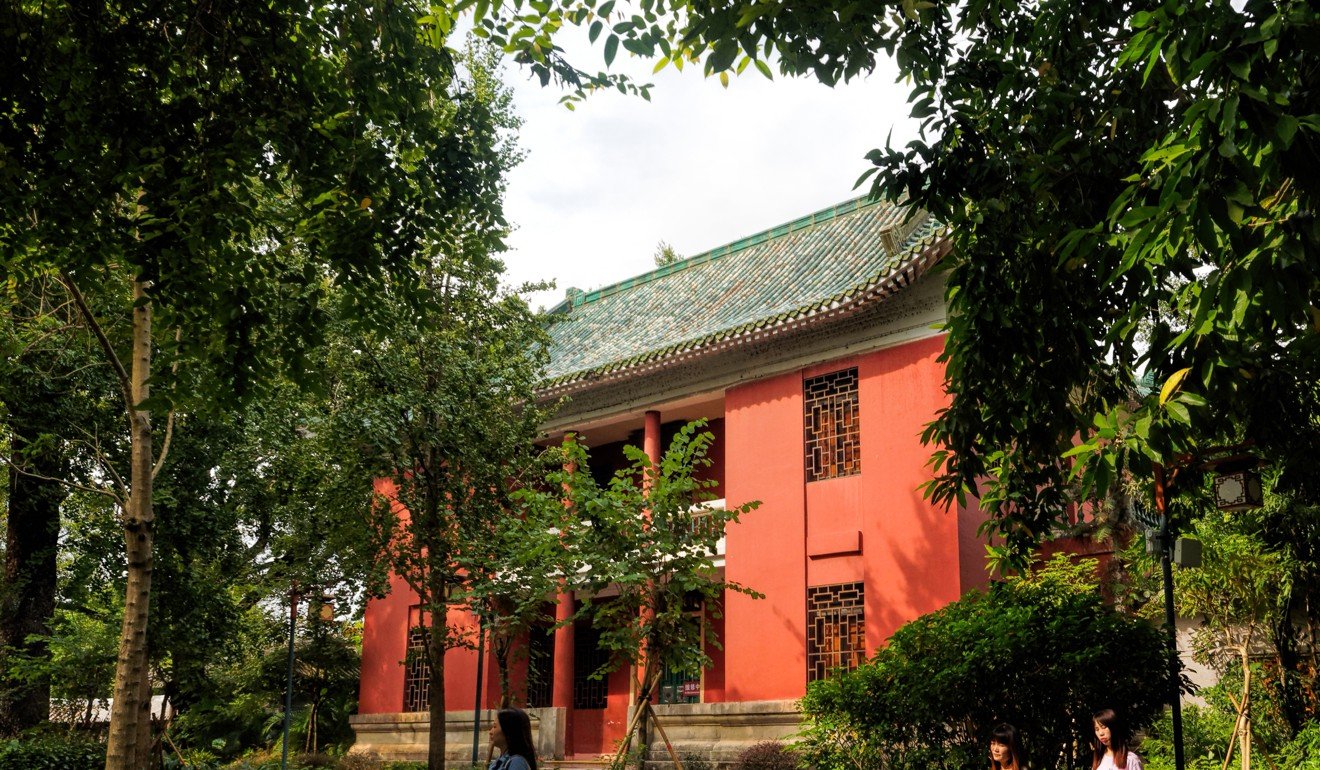
We take a taxi to West Lake’s main peak near Gaobang Shan. This is little more than 200 metres high, and a pleasant uphill walk, accompanied by other families out for a weekend stroll.
At the top is the imposing Guabang Pavilion, which is modelled on ancient Chinese architecture, yet has a lift to the fourth floor – where a balcony affords panoramic views of the land below. There are low, gently rolling wooded hills.
One slopes down to West Lake, from here appearing as a sliver of silvery water on a grey afternoon, beyond which are the high-rises clustered in the city centre. Closer, to the south, green hills cradle Honghuahu, or Red Flower Lake, an amoeba-shaped reservoir.
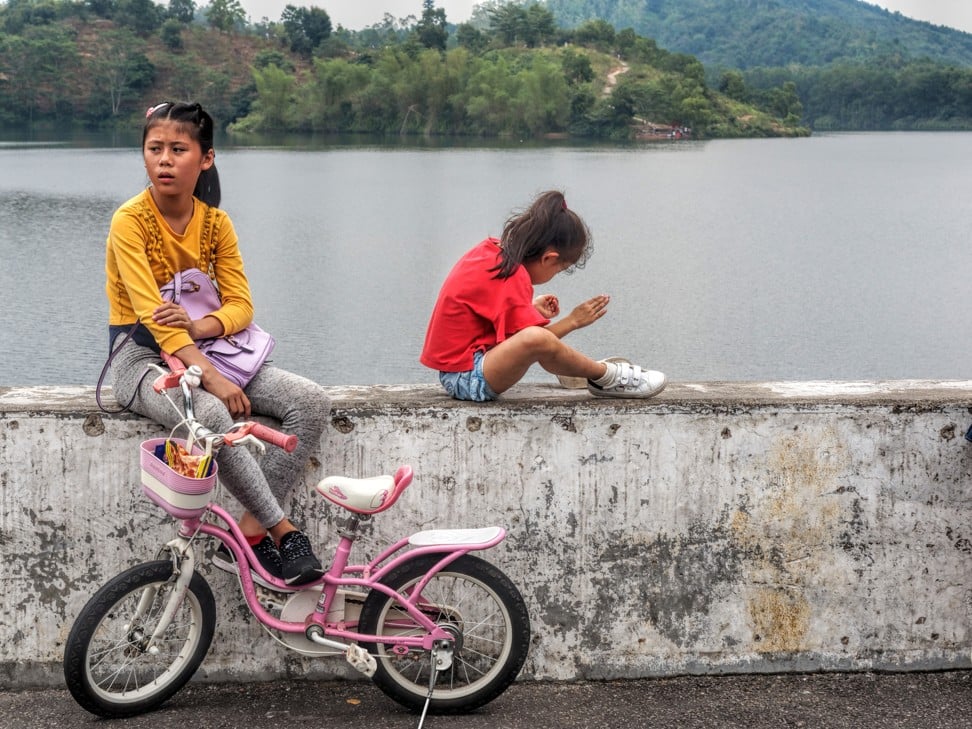
There is a path with some steep flights of steps to the edge of the lake. Here, we hire bicycles, and follow an anti-clockwise route around the lake, along a road that almost hugs the contours, twisting in and out of a myriad of small bays.
The ride is enjoyable, taking around an hour to make an 18-kilometre circuit.
Then, we walk down a road to the edge of the city, and hail a taxi for the ride past West Lake’s pagoda and recently built, old-style buildings, before the journey back to Hong Kong.
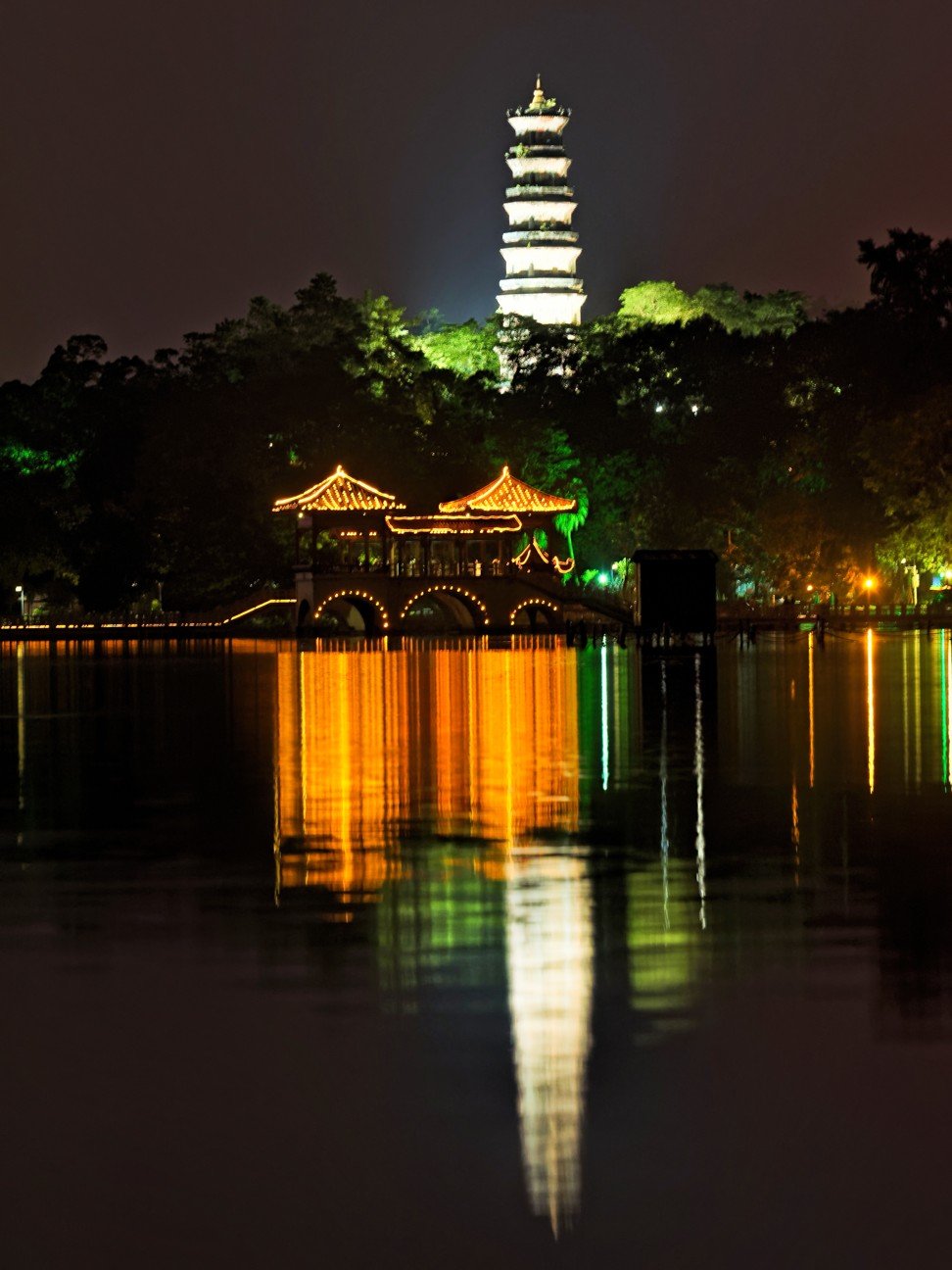
Getting there
An hour and 10 minutes after leaving Kowloon, the high-speed rail train pulls into Huizhou South railway station. From there a slow bus takes a little over an hour to Huizhou (a taxi would be faster).
There are also buses from Kowloon Tong to the Kande International Hotel by the north shore of West Lake, operated by Eternal East Bus Company.
High-speed rail helps Shenzhen make Lonely Planet best cities list
Staying there

